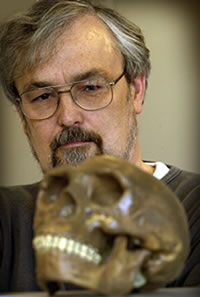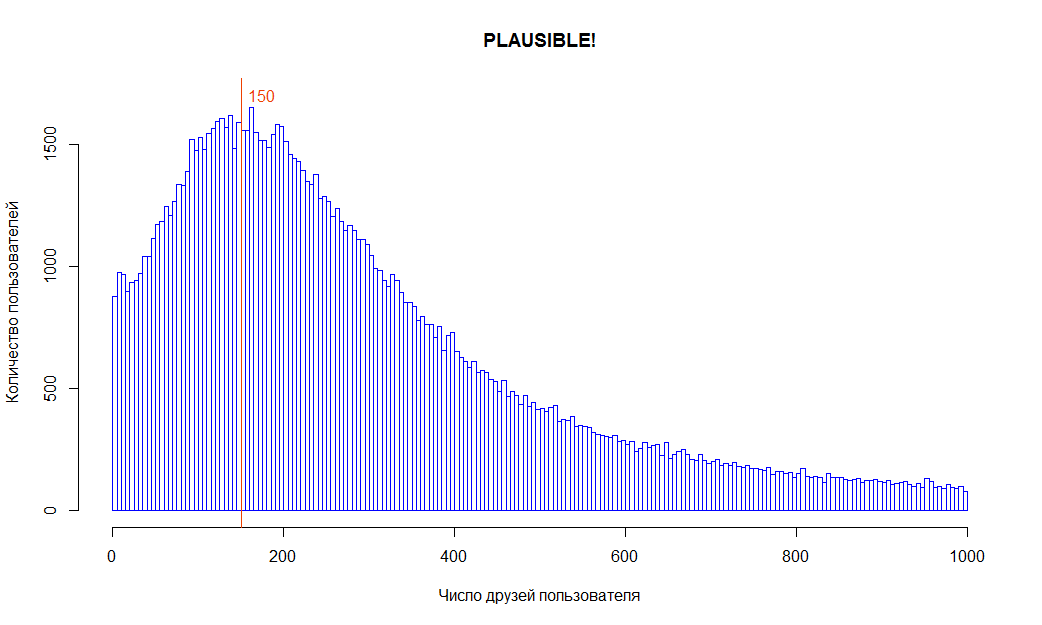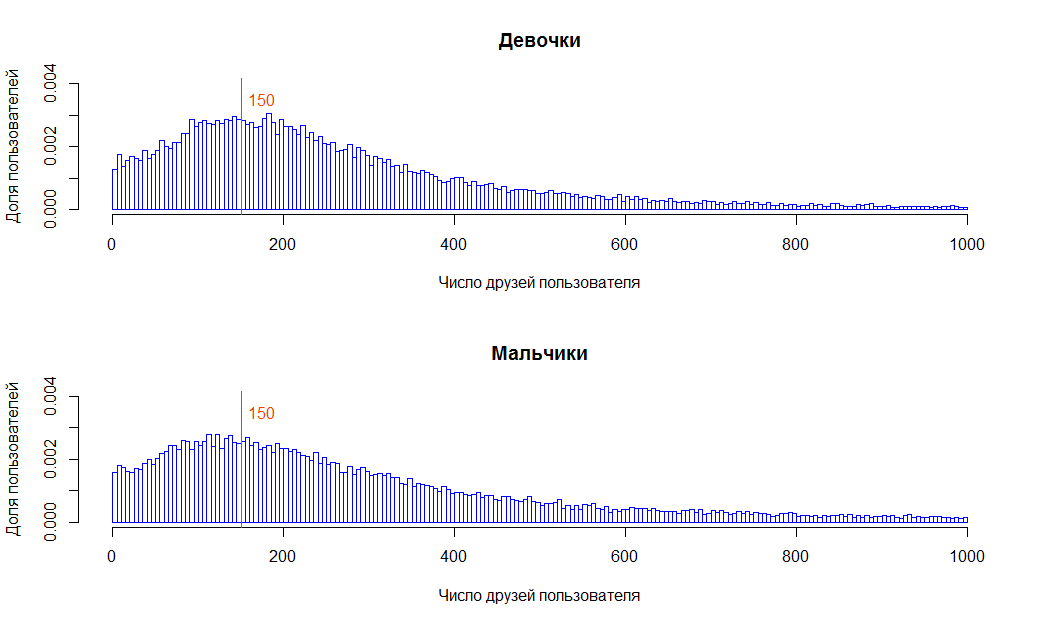Dunbar number and VKontakte users
 I recently stumbled upon such an amazing piece as the Dunbar number.
I recently stumbled upon such an amazing piece as the Dunbar number.The story is. More than 20 years ago, when the expression “British scientists” was not yet a meme, the anthropologist Robin Dunbar, studying the data on great apes, discovered that the number of their pack obeyed a certain law. There is a maximum number of members of the pack. If the flock grows and its number exceeds the threshold, it is divided into two. Moreover, for different species, this limit size is different.
Dunbar suggested that the case is in social relations between members of the pack, which in monkeys are well developed (for example, the pack is divided into clicks of "close friends" who help their members in conflicts). To keep together, each monkey needs to know each member of its pack: who it is, what kind of relationship it has with the rest. And the ability to process such social information is limited by the size of the brain, or rather its part - the neocortex. After processing data for several species, Dunbar actually found a correlation. And since we are primates too, he was able to extrapolate data to a person and got the same Dunbar number - the maximum number of people with whom a person can maintain stable social relations . It turned out to be about 150 .
As is the case with all the “magic numbers”, as soon as it was discovered, it began to emerge everywhere: in the number of tribes of primitive hunters and gatherers, in the amount of ancient Roman army units, in the number of modern companies, and even in the number of people to whom the average Englishman sends Christmas cards . Moreover, it began to be actively used in various areas: from designing social networks to reorganizing the tax service in Sweden.
In fact, everything is more complicated: the numbers at Dunbar are somewhat for different degrees of closeness of people. But 150 is the most famous. One of the figurative definitions is “the greatest number of people to whom you will not be embarrassed to get hooked if you happen to meet at a bar.” Well, or "the number of people you can ask for a favor, being sure that they will not refuse."
Having learned such an amazing thing, I could not go get it checked. Fortunately, social networks make it easy to do, and, allegedly, research on Facebook confirmed the idea of Dunbar.
I counted the number of their friends for ~ 159,000 VKontakte users and built a histogram. Of course, the number of friends is not the most accurate metric, because it does not take into account the strength of communication between people. But it is easy to get from publicly available data.
In this picture, for clarity, I cut off a long “tail” of distribution: there were some people with up to 10,000 friends (musicians, radio hosts and all kinds of amateurs to post funny pictures). Indeed, it is clear that the distribution has a maximum, and it is just somewhere in the region of 150.
')

And if you build a histogram separately for men and women, it turns out that men have a maximum less than women, which also coincides with the results of previous studies.

Of course, it would be interesting to use some other metric to filter out friends with whom the person does not maintain a relationship. For example, to look with whom he corresponds in personal messages or on the walls. But without the permission of the user such information is not obtained. It would be possible to take other social networks and consider, for example, people's connections by comments in LiveJournal. But I'm afraid the picture will spoil the abundance of bots, and the community is smaller there.
It is a little sad to realize that you cannot jump above the neocortex. But on the other hand, to discover that even such an ephemeral thing as friendship obeys quite clear laws of nature is impressive.
Some links on the topic:
The Dunbar Number, From the Guru of Social Networks
The ultimate brain teaser
Source: https://habr.com/ru/post/189226/
All Articles